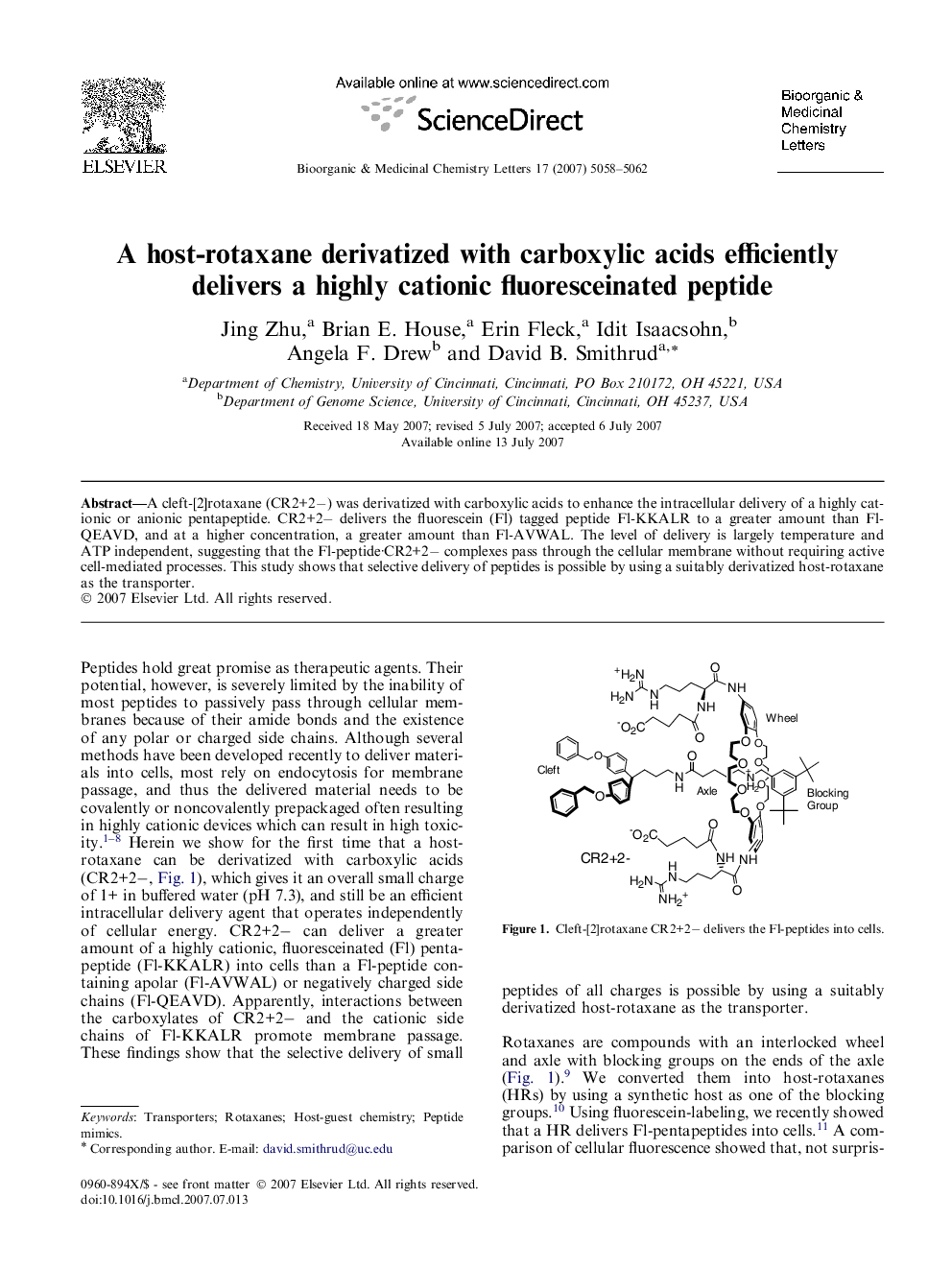| Article ID | Journal | Published Year | Pages | File Type |
|---|---|---|---|---|
| 1377519 | Bioorganic & Medicinal Chemistry Letters | 2007 | 5 Pages |
Abstract
A cleft-[2]rotaxane (CR2+2−) was derivatized with carboxylic acids to enhance the intracellular delivery of a highly cationic or anionic pentapeptide. CR2+2− delivers the fluorescein (Fl) tagged peptide Fl-KKALR to a greater amount than Fl-QEAVD, and at a higher concentration, a greater amount than Fl-AVWAL. The level of delivery is largely temperature and ATP independent, suggesting that the Fl-peptide·CR2+2− complexes pass through the cellular membrane without requiring active cell-mediated processes. This study shows that selective delivery of peptides is possible by using a suitably derivatized host-rotaxane as the transporter.
Graphical abstractFigure optionsDownload full-size imageDownload as PowerPoint slide
Related Topics
Physical Sciences and Engineering
Chemistry
Organic Chemistry
Authors
Jing Zhu, Brian E. House, Erin Fleck, Idit Isaacsohn, Angela F. Drew, David B. Smithrud,
